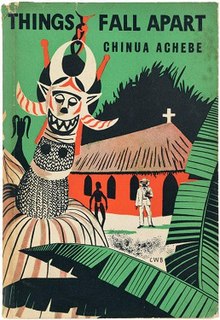 When the first costumed heroes arrived they were quite simple, honorable action men and women of uncuestionable morals and a selfless sense of duty going in colorful, strange and exciting adventures each week with concise dialogs and with an almost minimalistic art style. Superman could fight giant robots one week and become a monkey the next, there were no limits as long as the readers were still entertained. Throughout the years, comic books got progressively more serious, the crazy nonsense decreased considerably and the focus on riskier topics that were socially relevant like racism, discrimination or even drug abuse increased. Nonetheless, the medium was still considered a mere entertainment for young people and no one really pay much attention to the real potential that comic books had.
When the first costumed heroes arrived they were quite simple, honorable action men and women of uncuestionable morals and a selfless sense of duty going in colorful, strange and exciting adventures each week with concise dialogs and with an almost minimalistic art style. Superman could fight giant robots one week and become a monkey the next, there were no limits as long as the readers were still entertained. Throughout the years, comic books got progressively more serious, the crazy nonsense decreased considerably and the focus on riskier topics that were socially relevant like racism, discrimination or even drug abuse increased. Nonetheless, the medium was still considered a mere entertainment for young people and no one really pay much attention to the real potential that comic books had. That was until 1986 when DC Comics published the miniseries Watchmen, written by Alan Moore with art by Dave Gibbons. The main story revolved around the mysterious death of a former hero and the dark implications that it might have. One of the aspects that really got the attention of the readers is how incredibly flawed all the characters are, they have fears, insecurities and needs while being constantly portrayed as morally grey. Bleak characters like Rorschach, Dr. Manhattan & Ozymandias immediately resonated with an audience that was living through the worst part of the cold-war, when a nuclear menace seemed more than possible. The world was a different place and there was no place for the harmless optimism that heroes like the Flash or Wonder Woman perpetuated.
Superheroes were a reflection of the American culture of the 1930’s, meaning that the modernist ideals leaked through the speech bubble like Batman and Robin. Moore took this archetypical heroes and turned them upside down, he took this vision of the American Dream and adapted it to modern times where paranoia and fear ruled the world. If Superman was the embodiment of the American Way in the thirties, now we had The Comedian, a sadistic and abusive guvernamental “hero” who represented the new wave of superheroes.
To get his point across even further, Moore introduce Hollis Mason, the original Night-Owl, and the rest of the Minutemen as the representation of the Golden Age of comics and all the ideals and morals that that era represented. Mason looks his days as a vigilante with fondness and misses a past that at least seemed simplier. Since the character works as a direct stand-in for Dan Garret The Blue Beetle, his brutal death is even more symbolic when one night a mob of people just invades his place and takes him out because of his connection with costumed heroes. The postmodern views destroy and annihilate the spirit and values of modernism, opening the path for a darker and less hopeful vision of world.
Moore’s iconoclastic behavior is what destroyed and put back together the comic book industry. After Watchmen all the heroes had to be humanized, so we killed Superman and Flash while breaking Batman and driving Green Lantern to insanity. Terms like graphic novel started to be used to make a clear distinction that comic books were no longer a child’s thing. Now everything had to be dark and gritty focusing on bleak storylines and damaged characters. What Moore envisioned as a satire and a postmodern critic to a genre became the norm. This is mainly why in the recent years he has been very vocal about his opinion regarding the medium. In an interview to The Guardian he stated that “I hate superheroes. I think they're abominations. They don't mean what they used to mean. They were originally in the hands of writers who would actively expand the imagination of their nine- to 13-year-old audience. That was completely what they were meant to do and they were doing it excellently. These days, superhero comics think the audience is certainly not nine to 13, it's nothing to do with them.” (Moore, 2013) Those are really hard words from the man who reinvented the genre, but he has a point, until we finally embrace the Neo-Modernism that people like Grant Morrison have been trying to impulse in the last few years, superheroes are dead.














